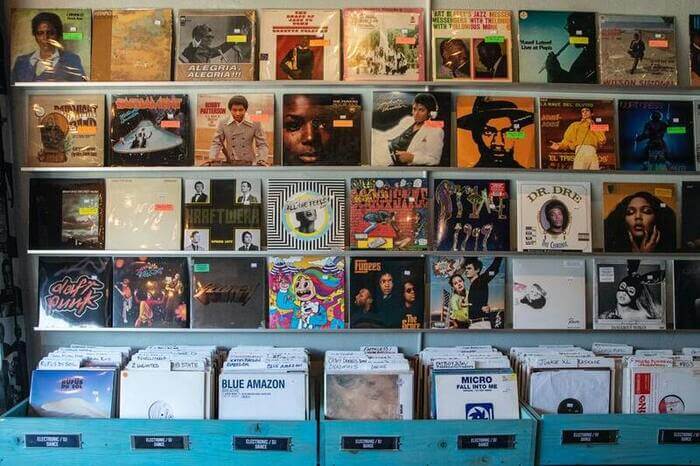You might have seen new releases from dead artists, which might have confused you. After all, they cannot be making new music, nor can they decide to release their old material. Still, it’s not uncommon to see new releases from dead artists like Prince, XXXtentacion, Lil Peep, and many others. But, how do dead artists release music?
How Do Dead Artists Release Music?
Artists usually record a lot more songs than what they release officially. Some of the recorded songs may not make it to an official release due to many reasons. Sometimes, these songs are not thought to be good enough to be put into an album by the artist or the label. Sometimes these songs are recorded but not immediately released and saved for future releases.
There may also be other problems preventing the release such as issues with the label or disagreements between the collaborating artists.
When an artist dies, what happens is that their unreleased music gets released by whoever owns the right to the artist’s music. To release the previously unreleased works after the death of an artist is called a posthumous release.
One reason for releasing music by a dead artist is to continue their legacy and pay tribute to them. For example, after Lil Peep’s death, his mother Liza Womack has been actively releasing his old music from the vault to keep his music alive. She has even released music videos and brought together the collaborators Lil Peep had intended to work with to move forward with his original plans.
Another reason is that there may be a commercial demand for dead artists’ music in the market if they had a big following. Sometimes the dead artists have recorded so many songs when they are alive that the labels have years of material to release after their death. This, of course, translates into a lot of money to make for labels in the years to come.
Whether it is ethical to release music by dead artists for the sake of the money is another issue we will try to address later in the post. Still, there is no doubt that the money is a strong motive for dead artists’ labels and families to keep releasing their old music even if they would not have given consent had they been alive.
For example, since Prince died in 2016, 3 posthumous albums have been released with the songs he was recording since the 1970s. In fact, Prince was such a compulsive recorder that it is estimated there are enough songs in the vault for his label to release one Prince album a year for the next 100 years.
Another dead artist whose music is still getting released is XXXtentacion, who had signed a $10 Million album contract prior to his death. When he died in 2018, he had already completed most of the album, so his label released the album at the scheduled time even though he wasn’t alive at the time of the release.
In 2019, another XXXtentacion album, Bad Vibes Forever, was released posthumously. Apparently, XXXtentacion also has many songs in the vault waiting to be released by his label in the following years.
Sometimes, what is left from the dead artist is not completed songs but some random voice memos and snippets of recordings. In this case, these unfinished tracks may be completed by the artist’s producers or other musicians in a way that would reflect their way of composing. While it’s a fairly common practice, there have also been some controversial incidents in the past related to working with unfinished tracks of a dead artist.
The most famous one is the case over Michael Jackson’s three fake songs in his first posthumous album, Michael. When the album was released by Jackson’s label following his death, his family insisted that three of the songs in the album did not feature his vocals.
Sony Music was even sued by a fan for faking vocals in the album, and after a series of trials, the company admitted that some of the songs were indeed never sung by Michael Jackson.
What Is a Posthumous Album?
A posthumous album refers to an album that includes tracks that didn’t get released when the artist was alive but only released after their death. However, the greatest hits compilations featuring the previously released and best-performing songs do not count as posthumous albums. A posthumous album only includes the previously unreleased tracks.
Are Posthumous Albums Ethical?

Whether it is ethical to release the unheard songs after an artist’s death is a complicated question that depends on many factors.
First of all, there are two types of posthumous albums: intended and unintended.
Intended posthumous albums refer to albums that the artist has started recording while alive, but they know or suspect they won’t be alive when the album gets released. In this case, the artist is aware that the album will most likely get released as a posthumous album. This gives the artist an opportunity to provide instructions on how the album should be completed and released.
One of the most famous examples of an intended posthumous album is Queen’s Made in Heaven. While the album was being recorded, Freddie Mercury knew that he would pass away soon, hence the album’s title. Released a few years after Mercury’s death, the album features the songs the band had recorded at the final phases of his life.
Unintended posthumous albums are where things get more complicated. This type of album includes unreleased tracks that the artist recorded while alive without knowing they would pass away. The artist may or may not have an intention to release these tracks. Some of these tracks can also be uncompleted.
In this case, if the artist’s family or label knows that the artist had an intention to release these tracks before their death, then releasing them after the artist’s death can serve as a respectful way to honor the artist’s work. If there are unfinished tracks to be included in the album, the producers, other band members or anyone involved in completing these songs should complete them in a way the artist would.
For example, Mac Miller’s Circles (2020) was released as a posthumous album which was mostly completed at the time of Miller’s death. His family also confirmed that he had definitely planned to release it. Given the artist’s intention and his family’s support, the release of this album can be seen as a way to pay tribute to the artist’s work.
Although we cannot deny that there is a lot of money to be made out of this album for both the label and the family, the motivation to release it comes from a place of appreciation and respect rather than greediness.
However, there are also other instances where it is uncertain if the artist had any intention to release or even complete these tracks. In this case, it is important to look at the intentions and motivations behind a particular posthumous release.
Sometimes there is no information on whether the artist would want the public to hear these unreleased recordings. Still, the artist’s family and label might decide to release them as a way to honor them and give fans a last chance to enjoy their music. Despite differing opinions, most people wouldn’t necessarily think this kind of release is disrespectful to the artist.
The posthumous albums that are mostly considered to be unethical are the ones that are released with no intention other than making money out of a dead artist. Since the primary motivation behind these albums is purely financial gains, they may not truly reflect the artist’s musical decisions, style, or aesthetic.
For example, these albums may feature other artists to make up for the absence of the dead artist in some tracks. However, when the reason to release the album is money, these featured artists are often not the ones that the dead artist would want to collaborate with.
Who Gets Royalties When a Musician Dies?
As surprising as it may sound, when an artist dies, their estate might make more money than if the artist were still living. This usually occurs due to the heavy media coverage and fans’ increased interest in the dead artist.
As the revenue keeps coming in, sometimes even decades after the artist’s death, there must be someone reaping the rewards.
Who will get the royalties when a musician dies usually depends on what the artist stated in their will. The artist may have chosen to pass on their royalties to their spouses and children. In some cases, they may have chosen a charity or an institution.
Whoever gets the royalties continues to receive revenue for the next 70 years, after which the works of the dead artist fall into the public domain.
However, if the artist died unexpectedly and did not leave a will, things get a bit complicated. In this case, attorneys, courts, and the relevant state of residency must intervene to decide who will get the rights to the dead artist’s music.
For example, the sudden death of Prince in 2016 without a will sparked a legal struggle over who should receive the rights to his musical empire. While his net worth was more than $200 million, he did not have any surviving children, spouse, or parents at the time of his death. The lack of will made things even more complicated, leaving the ultimate decision to the Minnesota courts.











1 comment
https://vm.tiktok.com/ZGJqpbdHG/
This is one of Daniel Woodyer’s (Pirate crab) TikTok videos. He died suddenly this year with many unfinished projects.